|
Frontpage of GOP-frettir
Forsíða GÓP-frétta
*
*
|
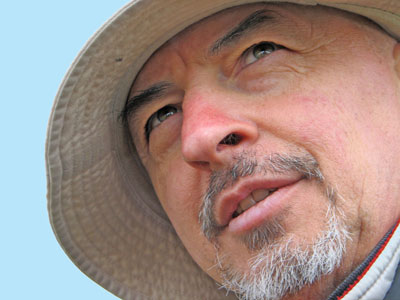
Giancarlo Gianazza |
|
On Giancarlo Gianazza's
approach to the Comedy Enrico Catapano:
Dante in Iceland,
Leonardo, Raffaello,
Botticelli and the
Templars. |
|
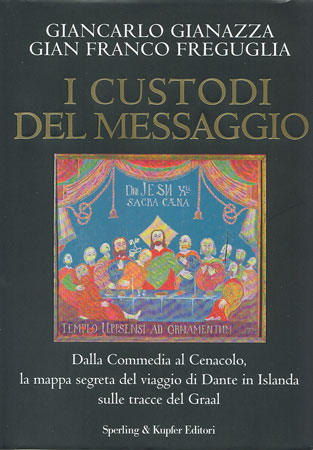
ISBN 88-200-4100-6
Sperling & Kupfer Editori |
|
Isa Di Domizio translated
the Italian original
into English
|
GÓP þýddi á íslensku
|
|
Giancarlo Gianazza is a graduate in engineering and a lover
of medieval art, philosophy and astronomy. He has spent the last eight years
deciphering paintings by Leonardo, Botticelli and Raphael as well as Dante's
Divine Comedy. He has carried out thorough research work and fieldwork in
Iceland in an attempt to find evidence in support of the assumption that
Dante's extra-terrestrial journey, as described in his poem is none but the
description of an actual journey by the poet to and inside Iceland. |
Giancarlo Gianazza er
menntaður á sviði verk- og tæknifræði og áhugamaður um miðalda listir,
heimspeki og stjörnufræði. Síðastliðin átta ár hefur hann helgað sig
rannsóknum og lesið úr gátum í málverkum Leonardos, Botticellis og Rafaels
og einnig í hinum Guðdómlega Gamanleik Dantesar. Hann hefur
lagt mikla vinnu í að finna þess merki á Íslandi að þangað hafi Dante farið
og sé að lýsa þeirri ferð sinni í kvæðinu - en ekki för til einhvers annars
heims. |
|
The soundness of his intuitions, corroborated by accurate
mathematical calculations and recurring geometrical schemes (applied to
paintings by Botticelli, Leonardo and Raphael) has increasingly found credit
with scholars from different schools and nationalities. |
Fjölmargir menntamenn
ólíkra greina og af ýmsu þjóðerni hafa snúist til hans skilnings við að
kynna sér þær stoðir sem hann hefur skotið undir ályktanir sínar og stutt
nákvæmum stærðfræðilegum útreikningum og endurteknum flatarmálskerfum í
myndum sem þeir hafa málað, Botticelli, Leonardo og Rafael. |
|
To fully appreciate Gianazza's theories some explanation must
be given about the relationship between Dante and the Templars, a knightly
order created after the first crusades by some noble French knights with the
aim of protecting the Christian pilgrims in the Holy Land from attacks by
the Muslims. |
Til þess að átta sig á
kenningum Gianazza þarf að skýra tengingu Dantes og Musterisriddaranna en
þeir voru riddararegla sem stofnuð var eftir fyrstu krossferðirnar af
nokkrum velviljuðum frönskum riddurum í því skyni að vernda kristna
pílagríma fyrir múslimskum árásum á ferðum þeirra til landsins helga. |
|
These knights also had another purpose,
a "secret purpose", i.e. to find immensely powerful relics which are thought
to have been found among the ruins of the Temple of Jerusalem. At first they
were called "The Poor Knights of Christ" and were a monastic and warrior
Order. Within a few years of its foundation the Order managed to quickly
achieve great power and wealth, which gained them suspicion and jealousy by
the mighty of the time. Particularly, they attracted the hatred of King
Philip of France, who with the help of Rome managed to eradicate the
Templars Order in 1307. It was then believed that all affiliates had been
done away whereas an undefined number of them survived either by taking
refuge in other orders or fleeing to more peaceful lands. |
Riddararegla þessi átti sér einnig annað markmið,
leynimarkmið. Það var að leita afar mikilvægra helgra dóma sem talið er
að hafi fundist í rústum Musteris Jerúsalems. Í fyrstu var reglan nefnd
Hinir fátæku riddarar Krists og var stríðsmunkaregla. Á fáum árum tókst
reglunni að að ná undir sig miklum völdum og auði og það aflaði þeim
grunsemda og óvildar valdaafla samtímans. Einkum leit Fillippus Frakkakóngur
til þeirra hatursauga. Honum tókst að fá páfann í lið með sér og þeir
gjöreyddu Musterisreglunni árið 1307. Þá var talið að allar deildir hennar
hefðu verið þurrkaðar út en í raun lifðu margir þeirra þetta af ýmist með
því að leita skjóls í öðrum reglum eða með því að forða sér til friðsamlegri
svæða. |
|
Most important to notice is that among them were the
restricted number of knights in whose hands rested the "knowledge" of the
Templars and that has been protected for centuries. But who were the members
of such group and what could such knowledge amount to, to make it so dreaded
and powerful? |
Mikilvægt er að gera sér grein fyrir því að meðal þeirra
sem sluppu frá þessum ofsóknum var útvalinn hópur sem gætti þekkingar
Musterisriddaranna - og hennar hefur verið gætt í aldir. En - hverjir voru í
þessum hópi og hver getur verið sú þekking sem sjálfrar sín vegna er svo
ógnandi og svo máttug? |
|
Here is where Giancarlo Gianazza comes in and publishes with
Gian Franco Freguglia the first results of his research in the book "I
Custodi del Messaggio" |
Það er hér sem Gianazza
kemur til sögunnar og gefur út fyrstu niðurstöður sínar í bók sem Gian
Franco Freguglia skrifar með honum, I Custodi del Messaggio. |
According to Gianazza the greatest names in the Medieval and
Renaissance periods (Dante, Botticelli, Leonardo and Raphael) would be the
trustees of the old Templar knowledge. This would have been handed down to
posterity encoded in their masterpieces. Such knowledge would concern the
Grail, which according to Gianazza "is not a concrete object as it was
believed to be for a long time but rather a primitive nucleus of the message
of Christ, an original doctrinal "body" handed down secretly throughout the
centuries".
(v. I Custodi del Messaggio - p. 215) |
Gianazza telur að merkustu
fulltrúar endurreisnar á miðöldum, þeir Dante, Botticelli, Leonardo og
Rafael, hafi verið þeir sem gættu hinnar fornu þekkingar
Musterisriddaranna. Henni hafi síðan verið skilað til komandi
kynslóða með duldum skilaboðum í snilldarverkum þeirra. Þekkingin snerti
Hinn heilaga kaleik, sem Gianazza segir vera ekki þann hlut eða grip
sem svo lengi hefur verið talið heldur fremur frumstætt safn skilaboða frá
Kristi. Upphaflega kenningaheild sem haldist hafi í leynum um aldir.
(Sjá I
Custodi del Messaggio - s. 215). |
|
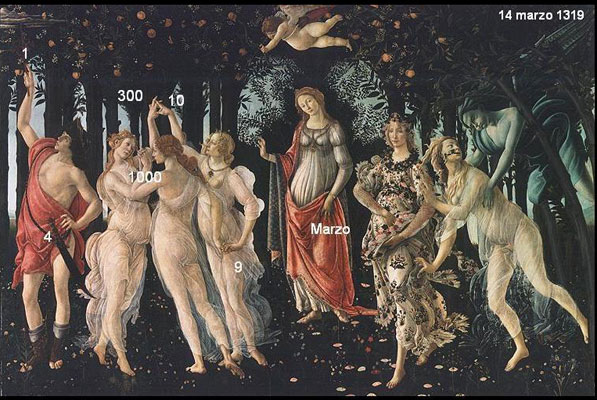
A mysterious date
Looking carefully at the group of the Graces I wondered why the position of
the fingers was so strange.
From that detail began my first attempt to interpret the painting with a
code
that led me to identify a precise date: 14 March 1319
Dularfull dagsetning
Þegar ég skoðaði gyðjuþrenninguna nánar þótti mér staða fingranna
sérkennileg.
Út frá því atriði upphófst fyrsta tilraun mín til að ráða í merkingu
málverksins
með táknmáli sem að lokum leiddi mig að dagsetningunni: 14. mars árið 1319.
|
|
All of Gianazza's work began in May 2002 when, analyzing
Botticelli's Primavera he realized that the artist had concealed a message
within the painting using a "digital" code, a true finger language used to
express numbers. Such code goes back to the gestures which were made by
monks in medieval monasteries to avoid interfering with the meditation of
their brethren. To hand down his secret, Botticelli also used an
"astronomical" code based on the position of a planet in relation to each
character in his painting. This secret proved to be a date, 14 March 1319,
by which according to Gianazza, Botticelli surely wanted to communicate
something which however could not be connected with any event in the life of
the artist, who lived in the second half of the 15th century. |
Upphaf þessa umfangsmikla
starfs Gianazza var í maí 2002. Hann var að skoða Vorkomu Botticellis
og áttaði sig á því að listamaðurinn hafði fléttað skilaboð í myndina. Í
myndinni voru sýnilega notuð talna-tákn úr fingramáli sem miðalda
munkar hagnýttu sér til að miðla tölulegum upplýsingum sín á milli án þess
að trufla íhuganir hvers annars. Til þess að koma boðunum til skila notaði
Botticelli einnig stjörnufræðileg tákn og gat þannig stillt upp
innbyrðis afstöðu reikistjarnanna í málverkinu. Það sem hann var að túlka
reyndist vera dagsetningin 14. mars 1319. Gianazza ályktaði að Botticelli
væri að koma skilaboðum á framfæri sem þó var ekki líklegt að væri tengt
honum sjálfum því hann lifði á síðari hluta fimmtándu aldar.
|
|
Further accurate studies brought Gianazza to find a
connection between Botticelli's painting and Dante's Divine Comedy. |
Gianazza lagðist í frekari nákvæmnisathuganir og rakti sig
fram til tengsla milli málverks Botticellis og Guðdómlega
gamanleiks Dantes. |
|
A first analysis of the Comedy led to a disconcerting
discovery: the date of the 14 March 1319 was also found in the form of an
astronomical periphrasis in the first few verses of Dante's Paradise. |
Fyrstu athuganir Gianazza
á Gamanleiknum vöktu honum enn frekari spurn. Það kom nefnilega í
ljós að hann fann dagsetninguna 14. mars 1319 ofna inn í fyrstu
versin í Paradís Dantes með umorðuðum tilvísunum til stjarna. |
|
After further analyses and mathematical calculations
Gianazza has come to maintain that Botticelli's Primavera is none but the
representation of the Garden of Eden and of Dante who, after being immersed
in the Eunoè River to purify himself is ready to ascend the kingdom of
heaven. |
Eftir frekari rannsóknir og útreikninga hefur Gianazza
komist að þeirri niðurstöðu að Vorkoma Botticellis sé
beinlínis af þeim Edens-garði sem Dante er í þann veg að stíga inn í eftir
hreinsun sína í ánni Eunoè og þannig reiðubúinn að stíga inn í himnaríkið. |
|
Here is where Giancarlo Gianazza appreciated the kind of
approach he was to use with the Comedy in order to unveil the other various
mysteries and messages cleverly concealed by the Poet. |
Þær viðmiðanir og aðferðir sem Giancarlo Gianazza notaði
hér í upphafi rannsókna sinna á kvæðinu þróaði hann áfram og hagnýtti við
yfirferð þess alls og náði þannig að leiða í ljós margvísleg fleiri dulin
boð sem skáldið hafði fólgið af mikilli list.
|
|
In his letter to Cangrande della Scala, it is Dante himself
who suggests the correct approach, by mentioning that his work has "manifold
meanings", i.e. the Comedy is to be read bearing in mind that in it there
are more meanings present at the same time in the same verses; and since its
allegorical and moral meanings had been amply dealt with in previous
studies, Gianazza experienced "a new systematic approach to the Comedy in
order to detect in the text any passages whose meaning would allow it to be
read as the story of a journey by the poet that had actually taken place
from the dark forest to the White Rose of the Blessed".
|
Í bréfi sem Dante skrifar
Cangrande della Scala gefur hann vísbendingar um hvernig lesa skuli kvæðið
til skilnings á boðskap þess. Hann segir þar að verk sitt hafi fjölþættan
boðskap. Gamanleikinn beri sem sagt að lesa með það í huga að boðskapur
hans sé margþættur - samtímis - á sama stað og í hverju stefi. Þar sem
táknrænn og siðrænn boðskapur ljóðsins hefur notið nauðhugullar athygli frá
upphafi prófaði Gianazza að lesa Gamanleikinn á nýjan hátt til að
greina setningar og ljóðlínur sem lesa mætti sem sögu af ferð sem skáldið
hefði í raun sjálft farið. Ferðina frá Myrku skógum til Hvítu rósar hinna
Blessuðu.
|
|
In short, Giancarlo Gianazza completely changed the
traditional approach to the interpretation of the Divine Comedy, neglecting
any allegorical meaning and keeping to the literal meaning of the words. |
Í stuttu máli, Giancarlo Gianazza breytti gjörsamlega um
aðferð frá því sem fram til þessa hefur verið notuð við að lesa og skilja
kvæðið. Hin hefðbundna aðferð skilur kvæðið eftir orðanna hljóðan og er
blind fyrir öðrum boðskap. |
|
This is where a "new" analysis of the Divine Comedy began. On
the basis of complex calculations obtained from certain clues within the
verses (from their numbers to the position of certain syllables within them)
Gianazza managed to decipher some data concerning latitude and longitude of
the various stages along Dante's journey. |
Þar með hófst ný
greining á hinum Guðdómlega gamanleik Dantes. Með nokkuð flóknum
útreikningum út frá vísbendingum úr stefjunum, staðsetningu þeirra í
kvæðabálkinum og staðsetningu tiltekinna atkvæða innan þeirra, tókst
Gianazza að leiða í ljós upplýsingar um hnattræna lengd og breidd margra
þeirra staða sem Dante fór um á ferðalagi sínu. |
|
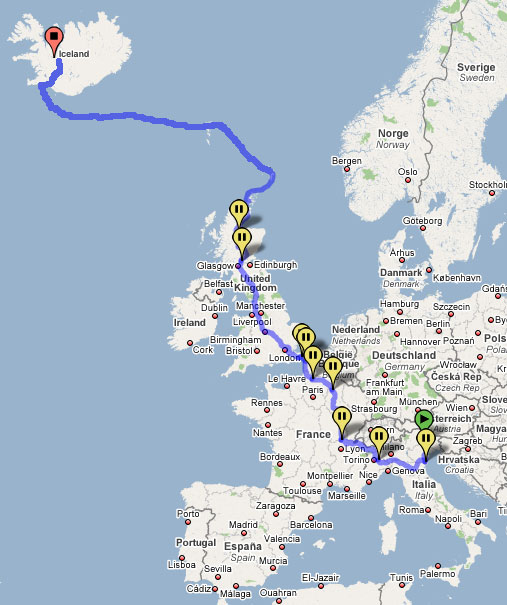
Dante´s trip to Iceland - 1319 - Ferðaleið Dantes til Íslands
|
|
This new discovery led Gianazza to think that other famous
artists might have shared the knowledge of Dante's code. In fact, in
Leonardo's Last Supper the same code methods can be traced as used by
Botticelli; and it is precisely in Leonardo's Last Supper that the
co-ordinates can be found of the locations, where in the course of centuries
was concealed what was later found in Jerusalem, i.e. the Isle of Citera in
Greece, Mount Cardou in France and finally an unidentified location in
central Iceland. |
Þessar nýju uppgötvanir
leiddu til þess að Gianazza fór að leita í verkum annarra frægra listamanna
eftir vísbendingum um að þar væri einhvers staðar að finna merki um sama
skilning á verki og dulmáli Dantes. Hann fann í Síðustu
kvöldmáltíð Leonardos sömu aðferð notaða og í verki Botticellis. Þar
fann hann hnattstöðu staða sem um aldir hafa fólgið það sem fundist hafði í
Jerúsalem. Þ.e. grísku eyjuna Citera, Mount Cardou í Frakklandi og
ótilgreindan stað í miðju Íslands. |
|
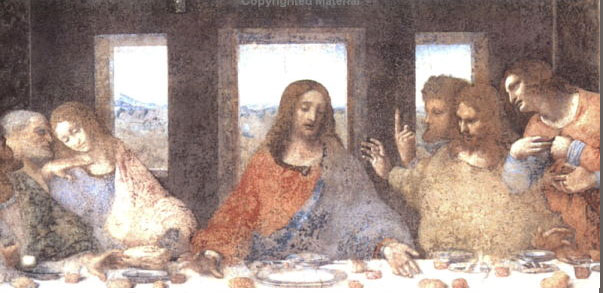
Leonardo da Vinci: The Last Supper - Síðasta kvöldmáltíðin. |
|

|
|
The calculations made on the Last Supper open the way to the
deciphering of the whole route followed by Dante in Iceland, and even more
disconcerting is the fact that the shape of such route, when drawn in
outline on a map of that territory, is exactly the same as the outline of
Jesus and the person sitting on his right. |
Reikningar Gianazza út
frá Síðustu kvöldmáltíðinni gera mögulegt að fylgja nákvæmlega
þeirri leið sem Dante fór á Íslandi. Enn athyglisverðara er að þegar dregin
er leið hans á kort af landsvæðinu er hún nákvæmlega eins og útlína Jesú og
þess sem situr honum á hægri hönd á málverkinu. |
|
According to Gianazza's
calculations, Dante began his journey from a definite point along the River
Jokulfall (in the Comedy it is none other than the starting point of his way
through the Holy Forest in the Garden of Eden), which runs parallel to the
oldest Icelandic road, the Kjolur Route to finally reach the place where he
would meet Beatrice in the White Rose of the Blessed. |
Eftir útreikningi Gianazza
hefst ferð Dantes á tilteknum stað þar sem hann er kominn yfir Jökulfallið.
Í Gamanleiknum er það sjálft upphaf ferðar hans gegnum
hinn heilaga skóg í garðinum Eden. Jökulfallið rennur samsíða Kjalvegi sem
er elsti fjallvegur Íslands. Leið hans liggur síðan til þess staðar þar sem
hann að lokum finnur Beatrice í hinni Hvítu rós hinna Blessuðu. |
|
Walking along the river and with the help of the geographical clues
concealed in the masterpieces of these Artists, Gianazza came to a natural
amphitheatre in the middle of which, slightly to the left of the perfect
centre, was a rectangular stone in the shape of a throne. |
Gianazza fór til Íslands
og gekk fram með þessari á. Með aðstoð flatar- og fjarlægðavísa sem faldir
eru í snilldarverkum þessara listamanna, gekk hann beint að náttúrulegu
vatnasviði þar sem örlítið vinstra megin við miðju var rétthyrndur steinn
eins og hásæti í laginu. |
|
This place could only be the final destination of Dante's journey, the White
Rose with the rectangular stone in the middle, Beatrice's "seat". This is
therefore the place which hides what Dante and the Templars have guarded for
such a long time. |
Lokamark ferðar Dantes
hlaut að vera hér. Hvíta rósin með rétthyrnda steininn fyrir miðju, sæti
Beatrice. Þess vegna er þetta staðurinn sem geymir það sem Dante og
Musterisriddararmir hafa gætt svo lengi. |
|
Another artist involved in Gianazza's research work was Raphael who, in the
12 frescos of the "Stanza della Segnatura" concealed connections with the
Divine Comedy, representing in two of them also Dante himself; the figures
of Apollo and Marsia are mentioned in the invocation to the
god of poetry in the first verses of Paradise; on mount Parnassus Raphael
shows Virgil who, together with Stazio shows Dante the way through the Holy
Forest to the Garden of Eden. |
Málarinn Rafael málaði
nokkur af þeim málverkum sem Gianazza kannaði í þessu skyni. Frescurnar 12
af Stanza della Segnatura bera með sér vísanir til Gamanleiksins. Í
tveimur þeirra sést Dante sjálfur. Myndir Apollo og Mars eru nefndar í
ákalli til skáldaguðsins í fyrstu stefjum Paradísar-hlutans. Á
Parnassus-fjalli sýnir Rafael Virgil, þar sem hann og Stazio vísa Dante til
vegar gegnum hinn heilaga skóg - til Eden. |
|
In the "Disputa del Sacramento" Raphael goes
even further suggesting the existence of a secret temple in Iceland; in fact
on the left some workers can be discerned who are building a temple while on
the right Dante stands in front of a white building in the shape of a cube,
which can only be the room that must be under Icelandic territory. Dante is
therefore the guardian of the temple. Moreover, Raphael, in the same
"Disputa del Sacramento" depicts Bramante examining Dante's Comedy. |
Í málverkinu Disputa
del Sacramento gengur Rafael enn lengra og gefur í skyn að á Íslandi sé
að finna leynilegt musteri. Raunar má þar vinstra megin sjá nokkra verkamenn
vera að byggja musteri - en hægra megin stendur Dante framan við teningslaga
hvíta byggingu sem ekki getur verið annað en það herbergi sem hlýtur að vera
í íslenskri jörð. Í sömu mynd málar Rafael ennfremur Bramante að gaumgæfa
Gamanleik Dantes. |
|
All these data have been made available by Giancarlo Gianazza who, thanks to
Icelandic architect Thorarinn Thorarinsson and geologist Thorgeir Helgason
as well as geophysicist Gianfranco Morelli has and is still verifying them.
His research is now centered on this temple,
inside which the Templars have concealed their "secret" entrusting its
custody to Dante. |
Allar þessar upplýsingar
hefur Giancarlo Gianazza fundið fram og hefur - með aðstoð íslenska
arkitektsins Þórarins Þórarinssonar og jarðfræðingsins Þorgeirs Helgasonar
og jarðeðlisfræðingsins Gianfranco Morelli - leitað að enn frekari
staðfestingum. Leitin beinist núna að musterinu þar sem Musterisriddararnir
hafi fólgið leyndardóm sinn og falið varðveislu hans í hendur Dante. |
|
At this stage, Gianazza is confident to have identified, with a certain
amount of accuracy, the location as well as the size of the temple. He says: |
Nú er þessum málum svo
komið að Gianazza telur sig með nokkurri vissu vita hversu stórt musterið sé
og hvar það sé að finna. Hann segir:
|
"Now I know what tools I need to probe the ground and bring to light an
archeological finding which may be of immense historical value to humanity.
This research is now reaching its final stage and the solution of this
enigma is barely a step away. I have come this far under the guidance of
Dante and Leonardo; now it is up to
the last "guardian" of the message to give up the secret it has kept hidden.
It will be the frozen land to answer a centuries-old question."
|
Nú veit ég hvaða tæki ég þarf til að skyggnast
í jörðina eftir fornminjum sem haft geta
afar mikið sagnfræðilegt gildi. Þessar rannsóknir eru nú að komast á
lokastig og lausn gátunnar virðist innan seilingar. Leiðbeiningar frá
Dante og Leonardo hafa skilað mér hingað. Senn verður það komið undir
síðasta vörslumanni skilaboðanna að ljúka upp leyndardómi þeirra. Þá mun
þeli jarðar loksins skila svari við aldagamalli spurn.
|
|
Back to Main *
Table of Contents * Top of this page |
Til baka á aðalsíðu *
Til baka í efnisyfirlit *
Efst á þessa síðu |





